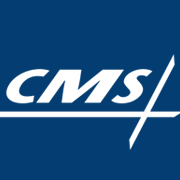CMS Final Rule Revises Medicaid Reimbursement, Drug Rebates
“The rule establishes the long-term framework for implementation of the Medicaid drug rebate and reimbursement programs."

- Medicaid reimbursement improvements are underway, according to a final rule from the Centers for Medicare & Medicaid Services (CMS). The rule – CMS-2345-FC – provides greater detail about Medicaid reimbursement and rebate calculation. Its goal is to promote the affordability of prescription drugs.

Under the Affordable Care Act (ACA), rebates have increased and federal reimbursements are restricted, CMS says within a press release. CMS plans revision of the Medicaid payment and the Medicaid drug rebate program.
The final rule is designed to ensure pharmacy reimbursement aligns with the acquisition cost of drugs. It also helps ensure states pay an appropriate professional dispensing fee, CMS explains. It will help the federal government combat rising prescription drug costs, CMS confirms.
“[Changes] to rebate percentages in the [ACA] have resulted in increased Medicaid rebates being paid to the federal and state government by manufacturers of covered outpatient drugs, including higher cost brand name drugs,” CMS explains.
Federal and state governments may potentially save $2.7 billion in five years under this rule, which becomes effective on April 1, CMS states. A public commentary period begins shortly.
“The rule establishes the long-term framework for implementation of the Medicaid drug rebate and reimbursement programs. The new definitions detailed in the rule will ensure that Medicaid rebates accurately account for market prices, maximizing taxpayer savings,” CMS says.
“The rule will also close loopholes, incentivize pharmacies to utilize generic drugs by ensuring proper reimbursements for their cost, and give territories additional tools to manage Medicaid drug costs.”
According to a CMS Medicare Drug Spending dashboard released earlier this month, prescription drugs are a major driver of healthcare spending. Prescription drug spending has reportedly risen by 12 percent since last year – the highest noted annual spike since 2002. Prescription drug spending is apparently rising, reportedly topping $3 trillion – or over $9,500 per person.
“Millions of Medicaid beneficiaries rely on prescription medications to manage chronic illnesses or treat acute conditions. But recently, the cost of prescription drugs has been rising rapidly, creating fiscal pressure and potentially compromising beneficiary access,” said Vikki Wachino, CMS Deputy Administrator and Director of the Center for Medicaid and CHIP Services.
CMS final rule details a 5-step cost savings plan
The final rule takes a 5-step approach to ensure Medicaid drug cost savings:
- The final rule creates a regulatory definition for Average Manufacturer Price (AMP), a key concept underpinning the Medicaid drug rebate program, which is the program’s key metric both for the determination of manufacturer rebates as well as pharmacy reimbursement for certain generic drugs that are subject to the Federal Upper Limit (FUL).
- By establishing a definition of AMP for inhalation, infusion, instilled, implanted, or injectable drugs, (5i drugs), which are not generally dispensed through a retail community pharmacy, states can collect rebates on more expensive infused and injected drugs, which are an increasing expense to the Medicaid program.
- The final regulation updates the FUL formula for the payment of certain generic drugs, which creates an incentive for pharmacies to utilize generic drugs because pharmacy costs for these drugs will be regularly updated.
- The final regulation also implements the Affordable Care Act provision that extended rebates to covered outpatient drugs provided to beneficiaries enrolled in Medicaid managed care organizations.
- The final rule revises the definition of “states” to include U.S. territories (Puerto Rico, Virgin Islands, Guam, American Samoa and the Northern Mariana Islands) in the rebate program so that territories can also achieve savings in their drug expenditures.
Mixed industry opinions swirl
 Previous proposals from CMS mention revisions to the MDR program, including the calculation of AMP, drug rebate payments, and upper limits for multiple source drugs.
Previous proposals from CMS mention revisions to the MDR program, including the calculation of AMP, drug rebate payments, and upper limits for multiple source drugs.
CMS says there was an array of opinion expressed among over 400 comments from healthcare providers, healthcare associations, state Medicaid agencies, and many others, about formerly proposed changes.
“We have provided for payment consistent with the statute and regulations which contemplate reimbursement for appropriate professional dispensing fees, which we have defined to include certain prescription and beneficiary counseling services,” CMS stated within its response to commentary.
Among a flurry of opinions, one commenter specifically expressed concern with CMS's inability to meet APA requirements. Another advised CMS “evaluate every aspect of the proposed rule” and revise it for simplicity and clarity.
“To the extent practical, we have made every effort to ensure that the provisions of this final rule are simple and clear,” CMS retorted.
“[We] believe that we have taken the necessary steps to comply with the requirements of the APA and that the requirements of this final rule are neither arbitrary nor capricious.”
